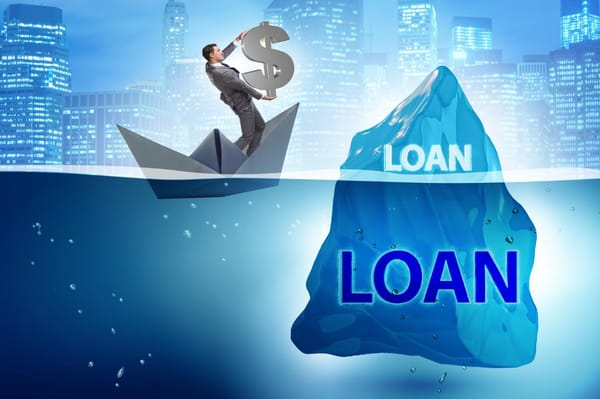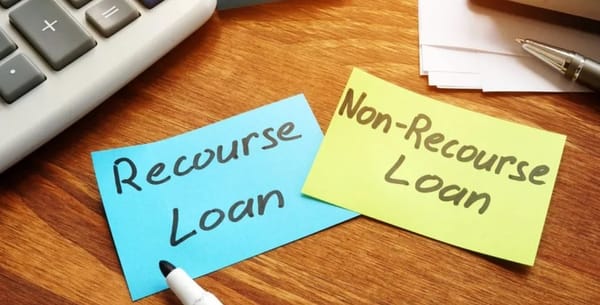The Impact of Defaulting on a Student Loan

Student loans can be a lifeline for those pursuing higher education, allowing students to access the necessary resources to achieve their academic and career goals. However, the burden of repayment can become overwhelming, leading some borrowers to default on their loans. Defaulting on a student loan is a serious financial misstep with far-reaching consequences that can impact a person’s financial stability, creditworthiness, and overall well-being. This article explores the impact of defaulting on a student loan, shedding light on the various facets of this issue and providing insights into how borrowers can avoid this financial pitfall.
Understanding Student Loan Default
Before diving into the consequences, it’s crucial to understand what it means to default on a student loan. Defaulting occurs when a borrower fails to make payments on their loan for a specified period—typically 270 days (nine months) for federal student loans. For private student loans, the timeframe can vary, but the outcome is similarly severe. When a loan is in default, the entire balance becomes due immediately, and the borrower loses access to any repayment plans or deferment options.
Financial Consequences of Defaulting on a Student Loan

The financial repercussions of defaulting on a student loan are extensive and can have a long-lasting impact on a borrower’s economic future.
1. Damaged Credit Score
One of the most immediate and significant consequences of defaulting on a student loan is the damage to the borrower’s credit score. Payment history accounts for 35% of a credit score, and missing payments can lead to a significant drop. A lower credit score can make it difficult to obtain credit cards, auto loans, mortgages, or even rental housing. Furthermore, a poor credit score can result in higher interest rates on any new credit, costing the borrower more in the long run.
2. Collection Costs and Fees
When a loan goes into default, the lender or loan servicer may turn the debt over to a collection agency. This process often involves additional costs that are passed on to the borrower. Collection fees can be substantial, sometimes as much as 25% of the loan balance, further increasing the amount owed. These fees can add significant financial strain to an already difficult situation, making it even harder for the borrower to repay the loan.
3. Wage Garnishment
For federal student loans, one of the more aggressive tactics employed by the government to recover defaulted loans is wage garnishment. The Department of Education can legally garnish up to 15% of a borrower’s disposable income without a court order. This means that a portion of the borrower’s paycheck will be deducted directly by the employer and sent to the government to repay the loan. This reduction in take-home pay can create financial hardship, especially for those already struggling to make ends meet.
4. Loss of Tax Refunds and Social Security Benefits
The federal government has the authority to intercept tax refunds and garnish Social Security benefits to recover defaulted student loans. This practice, known as a tax refund offset, can take a significant financial toll on borrowers, particularly those who rely on these funds to cover essential expenses or save for future needs. Additionally, the garnishment of Social Security benefits can severely impact older borrowers who may be on fixed incomes.
5. Ineligibility for Further Financial Aid
Defaulting on a student loan makes the borrower ineligible for additional federal financial aid. This can be a significant barrier for individuals who wish to return to school to complete their education or pursue advanced degrees. Without access to federal grants, loans, or work-study programs, the cost of further education becomes prohibitive, limiting the borrower’s career and earning potential.
Psychological and Emotional Impact
The consequences of defaulting on a student loan extend beyond financial hardships; they can also take a heavy toll on a borrower’s mental health and overall well-being.
1. Stress and Anxiety
The pressure of dealing with a defaulted loan can lead to significant stress and anxiety. Borrowers may feel overwhelmed by the mounting debt and the seemingly insurmountable task of paying it off. The constant worry about wage garnishment, collection calls, and the potential loss of assets can contribute to a heightened sense of financial insecurity. Over time, this stress can manifest in physical health problems, such as high blood pressure, insomnia, and weakened immune function.
2. Shame and Stigma
Defaulting on a student loan can also lead to feelings of shame and embarrassment. The societal stigma associated with financial failure can cause borrowers to withdraw from social interactions or hide their financial struggles from friends and family. This isolation can exacerbate feelings of loneliness and depression, further diminishing the borrower’s quality of life.
3. Impact on Relationships
Financial difficulties, including defaulting on a student loan, can strain personal relationships. The stress and anxiety associated with debt can lead to conflicts with partners, family members, or friends. In some cases, the pressure of dealing with debt can contribute to the breakdown of relationships or exacerbate existing tensions.
Long-Term Consequences
The long-term consequences of defaulting on a student loan can extend well beyond the immediate financial and emotional impacts, affecting a borrower’s future opportunities and overall quality of life.
1. Difficulty in Obtaining Employment
Some employers conduct credit checks as part of the hiring process, particularly for positions that require financial responsibility or access to sensitive information. A defaulted loan on a credit report can be a red flag for potential employers, making it more difficult for borrowers to secure employment. This can be especially problematic for those seeking jobs in industries such as finance, government, or law, where a clean credit history is often a prerequisite.
2. Limited Housing Options
A poor credit score resulting from a defaulted student loan can also impact a borrower’s ability to secure housing. Landlords often conduct credit checks on prospective tenants, and a low credit score can lead to rental application rejections or require higher security deposits. In some cases, borrowers may find themselves unable to rent in desirable locations or forced to live in less-than-ideal conditions.
3. Impact on Professional Licenses
In some states, defaulting on a student loan can result in the suspension or revocation of professional licenses. This can affect borrowers in fields such as healthcare, law, and education, where licensure is required to practice. Losing a professional license can have devastating consequences, including the inability to work in one’s chosen profession and the loss of income.
4. Legal Action
If a borrower defaults on a private student loan, the lender may choose to pursue legal action to recover the debt. This can result in a lawsuit, and if the court rules in favor of the lender, the borrower may face wage garnishment, bank account levies, or liens on personal property. Legal proceedings can add significant stress and financial burden, further complicating the borrower’s situation.
5. Long-Term Financial Instability
The accumulation of interest, fees, and penalties associated with a defaulted loan can make it difficult for borrowers to ever fully repay their debt. This can lead to long-term financial instability, as the borrower struggles to manage other financial obligations while dealing with the defaulted loan. The inability to achieve financial goals, such as buying a home, saving for retirement, or starting a business, can have lasting effects on the borrower’s financial well-being and prospects.
Steps to Avoid Defaulting on a Student Loan
Given the severe consequences of defaulting on a student loan, borrowers must take proactive steps to avoid falling into default. By managing their loans responsibly and seeking assistance when needed, borrowers can protect their financial health and avoid the pitfalls of default.
1. Understand Loan Terms and Conditions
The first step in avoiding default is to thoroughly understand the terms and conditions of the student loan. Borrowers should be aware of the repayment schedule, interest rates, and any available deferment or forbearance options. Understanding these details can help borrowers make informed decisions about managing their loans and avoiding missed payments.
2. Create a Budget
Creating a budget is an essential tool for managing finances and ensuring that loan payments are made on time. By tracking income and expenses, borrowers can allocate funds for loan payments and identify areas where they can cut back to free up additional resources. A budget can also help borrowers avoid unnecessary debt and build a financial cushion for emergencies.
3. Enroll in an Income-Driven Repayment Plan
For borrowers struggling to make payments, enrolling in an income-driven repayment (IDR) plan can be a viable option. IDR plans calculate monthly payments based on the borrower’s income and family size, making payments more affordable. In some cases, borrowers may even qualify for a payment of $0 per month, which still counts as making payments and keeps the loan in good standing.
4. Consider Deferment or Forbearance
If a borrower is experiencing temporary financial hardship, deferment or forbearance can provide temporary relief by allowing the borrower to pause or reduce payments for a limited time. While interest may continue to accrue during forbearance, this option can help borrowers avoid default while they work to improve their financial situation. It’s important to note that deferment and forbearance are temporary solutions, and borrowers should explore other long-term repayment options if needed.
5. Seek Loan Forgiveness Programs
Some borrowers may be eligible for loan forgiveness programs, such as Public Service Loan Forgiveness (PSLF) or Teacher Loan Forgiveness, which can forgive a portion or all of the borrower’s federal student loans after a certain period of qualifying payments. These programs can provide significant relief for borrowers working in public service, education, or other qualifying fields.
6. Communicate with Loan Servicers
If a borrower is struggling to make payments, it’s essential to communicate with their loan servicer as soon as possible. Loan servicers can provide information on available repayment options, deferment, forbearance, or other assistance programs. Early communication can prevent the loan from slipping into default and help borrowers find a solution that works for their financial situation.
What to Do If You Default on a Student Loan
If a borrower has already defaulted on a student loan, it’s important to take immediate action to mitigate the damage and work towards resolving the default.
1. Rehabilitate the Loan
Loan rehabilitation is one of the options for getting a federal student loan out of default. This process involves agreeing to a payment plan based on the borrower’s income and making nine consecutive, on-time payments. After completing the rehabilitation, the default status is removed from the borrower’s credit report, although the record of missed payments remains. Loan rehabilitation also restores the borrower’s eligibility for federal financial aid.
2. Consolidate the Loan
Another option for addressing a defaulted federal student loan is loan consolidation. This involves combining the defaulted loan into a new Direct Consolidation Loan, which can be repaid under an income-driven repayment plan. Loan consolidation can restore eligibility for federal financial aid, but it does not remove the default status from the borrower’s credit report.
3. Negotiate a Settlement
For private student loans, borrowers may have the option to negotiate a settlement with the lender. This typically involves agreeing to pay a lump sum that is less than the total amount owed. While settling the debt can resolve the default, it may still hurt the borrower’s credit score. Borrowers should be aware that settling a debt may also have tax implications, as the forgiven amount could be considered taxable income.
4. Seek Professional Help
If managing a defaulted loan becomes overwhelming, borrowers may benefit from seeking professional help from a credit counselor or financial advisor. These professionals can guide managing debt, creating a budget, and exploring repayment options. Nonprofit credit counseling agencies can offer services at little or no cost, making them an accessible resource for borrowers in need of assistance.
FAQs:
1. What does it mean to default on a student loan?
Defaulting on a student loan occurs when a borrower fails to make payments for an extended period, typically 270 days for federal loans. This results in the entire loan balance becoming due immediately and can lead to severe financial consequences.
2. How does defaulting on a student loan affect my credit score?
Defaulting on a student loan significantly damages your credit score by negatively impacting your payment history, which accounts for 35% of your credit score. This can make it difficult to obtain new credit and result in higher interest rates on loans.
3. Can the government garnish my wages if I default on a student loan?
Yes, for federal student loans, the government can garnish up to 15% of your disposable income without a court order if you default on your loan. This means a portion of your paycheck will be deducted to repay the loan.
4. What are the options to avoid defaulting on a student loan?
To avoid default, borrowers can create a budget, enroll in an income-driven repayment plan, consider deferment or forbearance, and communicate with their loan servicers for assistance. Understanding loan terms and seeking professional help if needed are also crucial steps.
5. What should I do if I’ve already defaulted on my student loan?
If you’ve defaulted, you can rehabilitate the loan by making nine consecutive, on-time payments, consolidate the loan into a new Direct Consolidation Loan, or negotiate a settlement with the lender. Seeking professional financial advice can also help you navigate the process.
6. How long does it take to recover from a student loan default?
Recovery time varies depending on the actions taken to address the default. Rehabilitation can remove the default status from your credit report after nine consecutive payments, but the impact on your credit score may take years to fully recover.
Conclusion
Defaulting on a student loan is a serious issue with far-reaching consequences that can affect every aspect of a borrower’s life. From financial hardships to emotional stress, the impact of default can be overwhelming. However, by understanding the risks and taking proactive steps to manage their loans, borrowers can avoid default and protect their financial future.
Borrowers need to stay informed about their loan terms, create a budget, and explore repayment options that suit their financial situation. For those who have already defaulted, taking swift action to rehabilitate or consolidate the loan can help mitigate the damage and set the borrower on a path to financial recovery.
In the end, the key to avoiding the pitfalls of student loan default lies in awareness, communication, and responsible financial management. By taking these steps, borrowers can navigate the challenges of student loan repayment and work towards a secure and stable financial future.




